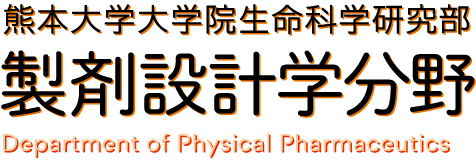Nutrition Research, 26(10), 503-508, 2006.
Enhancement of oral bioavailability of coenzyme Q10 by complexation with γ-cyclodextrin in healthy adults
Nutrition Research, 26(10), 503-508, 2006.
Enhancement of oral bioavailability of coenzyme Q10 by complexation with γ-cyclodextrin in healthy adults
Keiji Terao, Daisuke Nakata, Hiroshi Fukumi, Gerhard Schmid, Hidetoshi Arima, Fumitoshi Hirayama and Kaneto Uekama
The objective of this study was to determine the effect of molecular encapsulation of coenzyme Q10 (CoQ10) by complexation with γ-cyclodextrin (γ-CD) (CoQ10-γ-CD) compared with a mixture of CoQ10 with microcrystalline cellulose (CoQ10-MCC) on absorption and bioavailability of CoQ10 in supplement form in healthy adults. Twenty-two volunteers received a single dose of a 150-mg capsule containing 30 mg CoQ10 under fasting conditions in an open-label, crossover design with a 2-week washout period. Blood was collected before dosing and after dosing periodically over 48 hours. Plasma levels of CoQ10 were determined by high-performance liquid chromatography using an electrochemical detector and an online reduction system. After 6 and 8 hours of dosing there was a significant increase in mean CoQ10 plasma levels of subjects after a single oral administration of the CoQ10-γ-CD capsule compared with those with the CoQ10-MCC capsule. In addition, the mean plasma levels at 24 and 48 hours tended to be higher after CoQ10-γ-CD administration in comparison with CoQ10-MCC administration. The area under the plasma CoQ10 concentration curve and the maximum plasma concentration (Cmax) values as well as their corresponding log-transformed values, log area under the plasma CoQ10 concentration curve, and log Cmax for the CoQ10-γ-CD formulation were significantly higher than those for the CoQ10-MCC formulation. These results indicate that the oral absorption and bioavailability of CoQ10 in healthy adult volunteers could be significantly enhanced by complexation with γ-CD, suggesting the potential use of γ-CD as formulation aid for orally administered CoQ10Keiji Terao, Daisuke Nakata, Hiroshi Fukumi, Gerhard Schmid, Hidetoshi Arima, Fumitoshi Hirayama and Kaneto Uekama
The objective of this study was to determine the effect of molecular encapsulation of coenzyme Q10 (CoQ10) by complexation with γ-cyclodextrin (γ-CD) (CoQ10-γ-CD) compared with a mixture of CoQ10 with microcrystalline cellulose (CoQ10-MCC) on absorption and bioavailability of CoQ10 in supplement form in healthy adults. Twenty-two volunteers received a single dose of a 150-mg capsule containing 30 mg CoQ10 under fasting conditions in an open-label, crossover design with a 2-week washout period. Blood was collected before dosing and after dosing periodically over 48 hours. Plasma levels of CoQ10 were determined by high-performance liquid chromatography using an electrochemical detector and an online reduction system. After 6 and 8 hours of dosing there was a significant increase in mean CoQ10 plasma levels of subjects after a single oral administration of the CoQ10-γ-CD capsule compared with those with the CoQ10-MCC capsule. In addition, the mean plasma levels at 24 and 48 hours tended to be higher after CoQ10-γ-CD administration in comparison with CoQ10-MCC administration. The area under the plasma CoQ10 concentration curve and the maximum plasma concentration (Cmax) values as well as their corresponding log-transformed values, log area under the plasma CoQ10 concentration curve, and log Cmax for the CoQ10-γ-CD formulation were significantly higher than those for the CoQ10-MCC formulation. These results indicate that the oral absorption and bioavailability of CoQ10 in healthy adult volunteers could be significantly enhanced by complexation with γ-CD, suggesting the potential use of γ-CD as formulation aid for orally administered CoQ10


